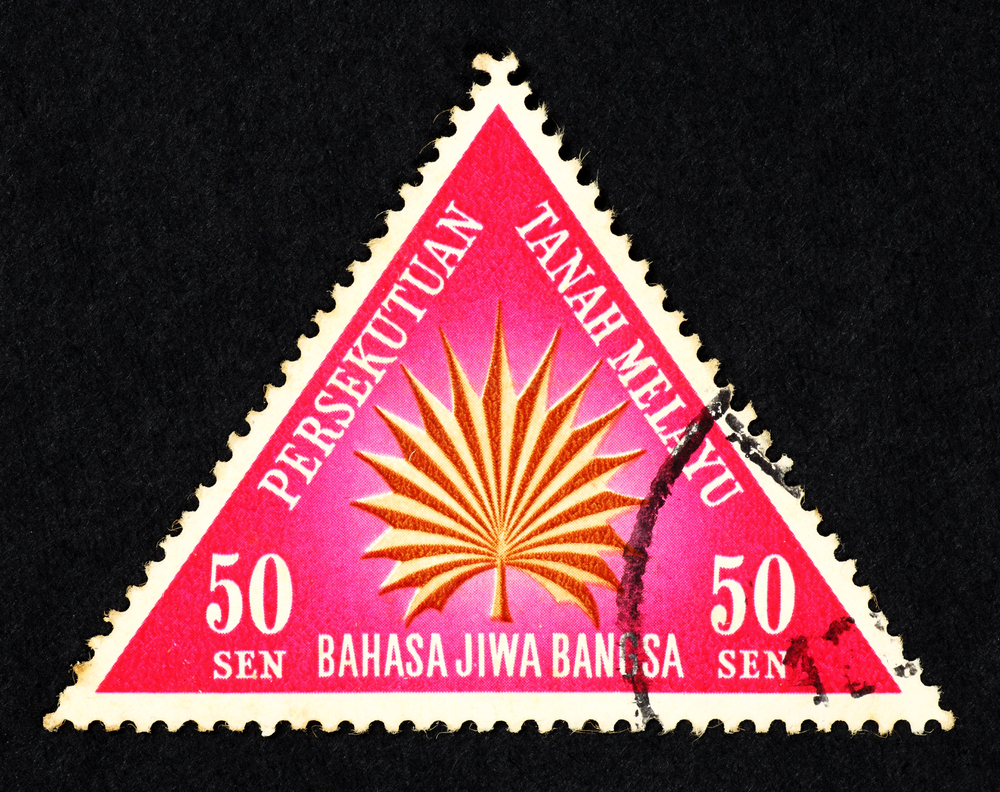The history of Bahasa Melayu / Malaysia: The language of the Malay(sian) people

This is part of our English to BM Phrasebook series. Check out all the other article in the series here.
The Malay language is part of the Austronesian language family and it is widely used in Singapore, Indonesia, Brunei and Malaysia by over 270 million people, each country with its own variation. The two main variations are Bahasa Melayu (also referred to as Bahasa Malaysia, see below) and Bahasa Indonesia. Both these languages may sound similar but do differ quite a bit to the learned speaker.
As with any language, Malay has evolved from its original form and modern Malay speakers might not recognise Old Malay. Many words in Malay have been adopted and adapted from other languages, the earliest being Sanskrit, and later on it was heavily influenced by other languages as well including Arabic, Tamil, Hindi, and English.
Evolution of Bahasa Melayu

The evolution of this language can be broken down into three time periods:
Old Malay (6th century to 15th century) is a formal language that is based heavily on Sanskrit. Various inscriptions were found in South Sumatera by the Tatang River on stone tablets dated between 682 – 689 AD.
From the 15th to mid-19th century, the Malay language evolved to what is now referred to as Classic Malay. At this point, a number of sultanates were established in peninsular Malaysia and Borneo and many legal documents and letters were written mostly in Arabic-based script, as Islam spread from Malacca to the rest of Malaya. Malay became the lingua franca (adopted common language) among traders who travelled through Malacca in the 15th century.
As the Islamic faith and Malay spread throughout the region, many Arabic words were infused into the existing language – words like halal, dunia (world), falsafah (philosophy) are some examples. There were also Persian words – bandar (town), kismis (raisin), pasar (market/bazaar) – and Hindi words – dobi (laungry), bendi (okra) – adopted as well from traders.

When the Portugese and Dutch arrived in Malacca, more words were added into the lexicon as they proselytised (converted others to) Christianity. Dutch scholars even converted the bible into Malay, which resulted in more additions to the Malay language. Some Malay words with Dutch origins are sepanduk (banner) and rokok (cigarette). The same happened with English vocabulary when the British colonised the country.
After Malaya gained independence in 1957, Malay became the national language. The language spoken and written now is classified as Contemporary Malay. As far as the evolution of languages go, this country’s has changed quite a bit in a very short time.
Many of the newer words in Malay come from English, possibly because English is widely used in Malaysia. So, when there’s a need for a specific word, it’s easiest to adapt from English. Kontemporari (contemporary), mesej (message), naratif (narrative) are examples of words adopted by Malay directly from English with only changes in spelling.
Attempts to standardise spelling in Bahasa Melayu and Bahasa Indonesia

At one point, Malaysia and Indonesia attempted to combine the two versions by standardising spelling in a format called Melindo (combining Malay and Indonesian). For example in Malay, spelling ‘ch’ and ‘c’ – contoh instead of chontoh (contoh means example); or spelling the diphthong ‘au’ as ‘aw’, so ‘pulau’ would be ‘pulaw’. However, the efforts fell apart and changes did not take effect at that time.
Still, in contemporary Malay, some of the spelling has changed over time. The word for pretty in Malay is cantik. Back in the 60s, it was spelled as ‘chantik’; but the word pulau remains unchanged. So over time, the language is still evolving, albeit slower than it used to.
Bahasa Melayu or Bahasa Malaysia?
This one is still a little bit of a mystery, even to Malaysians. For a while, the national language was recognised as Bahasa Melayu, but in 1997, it was changed to Bahasa Malaysia. While the Federal Constitution of Malaysia stipulates that the national language of the country is Bahasa Melayu, the cabinet issued an order in 1997 to refer the the language as Bahasa Malaysia instead to promote harmony.
The country’s authority on the Malay Language, Dewan Bahasa dan Pustaka, stated on their Facebook that both terms can be used interchangeably, depending on the context. For example, in scholarly discussions, Bahasa Melayu is more appropriate as the language is closely intertwined with Malay culture.
This still doesn’t really clear anything up and many Malaysians have their own preferences, so this little issue might not be resolved for a while. Plenty of Malaysians feel that it should be Bahasa Malaysia because it is their native tongue even though they aren’t Malay (which is defined by heritage and / or religion, not geographic location), while many others feel that it should be as specified in the constitution, Bahasa Melayu, to preserve the culture of the Malay people. For now, many just refer to the language as BM.
Follow us on Facebook or register for our weekly e-newsletter to keep updated.
"ExpatGo welcomes and encourages comments, input, and divergent opinions. However, we kindly request that you use suitable language in your comments, and refrain from any sort of personal attack, hate speech, or disparaging rhetoric. Comments not in line with this are subject to removal from the site. "





















